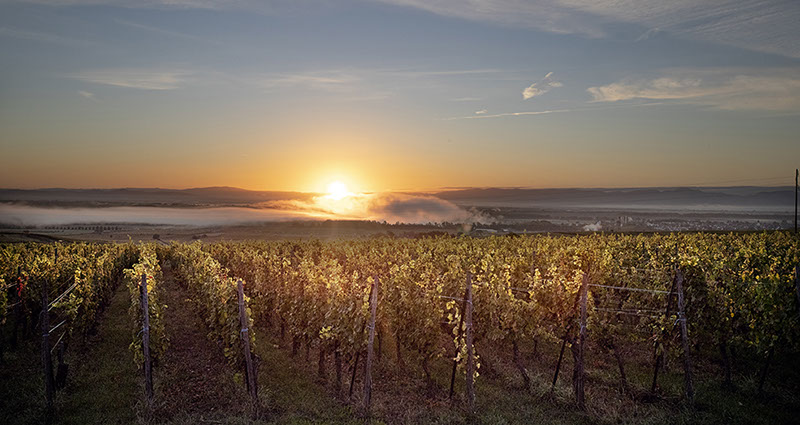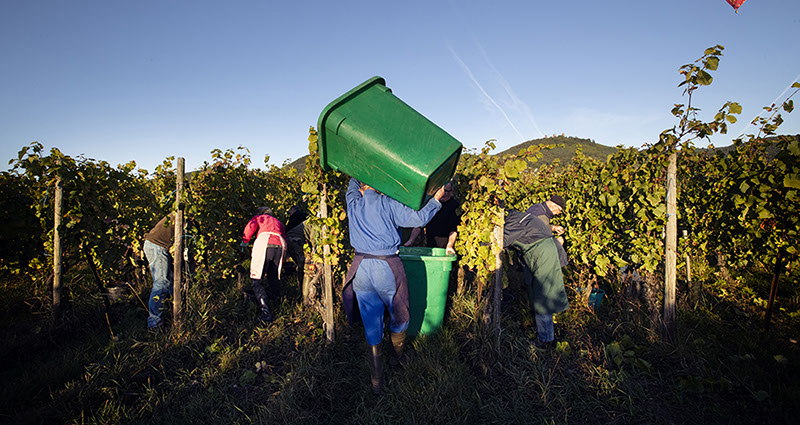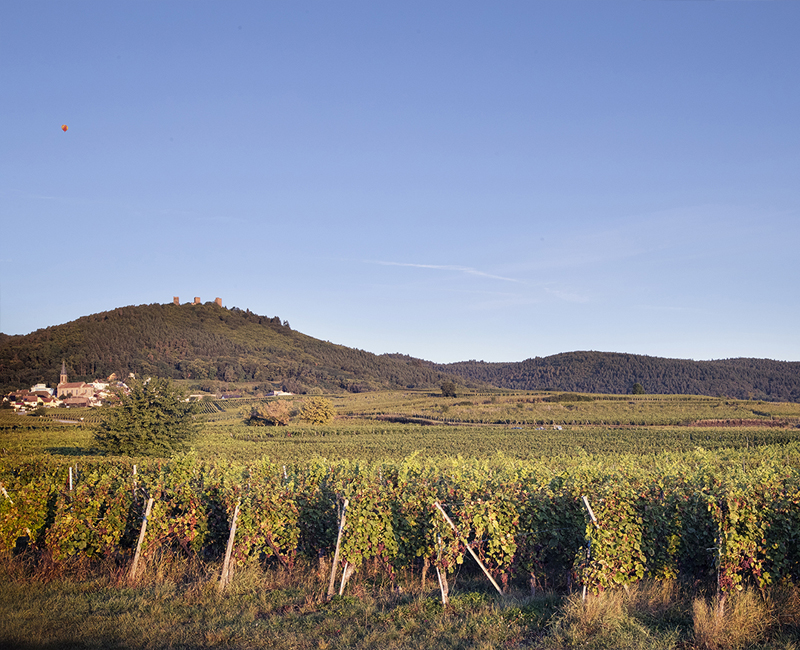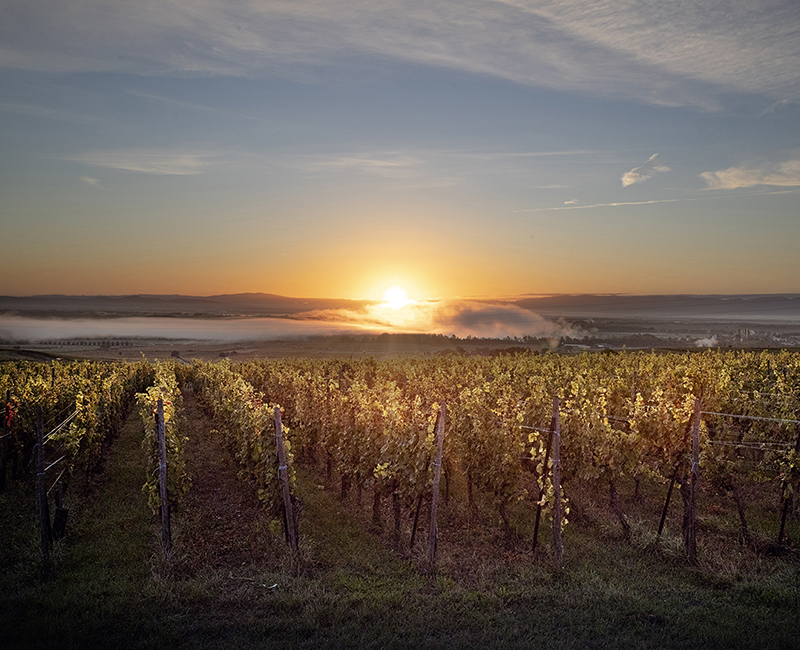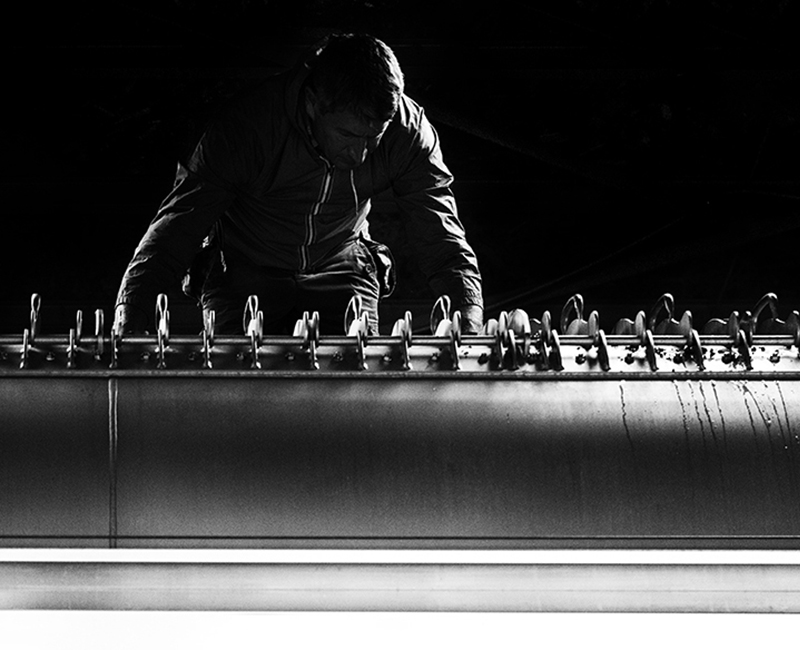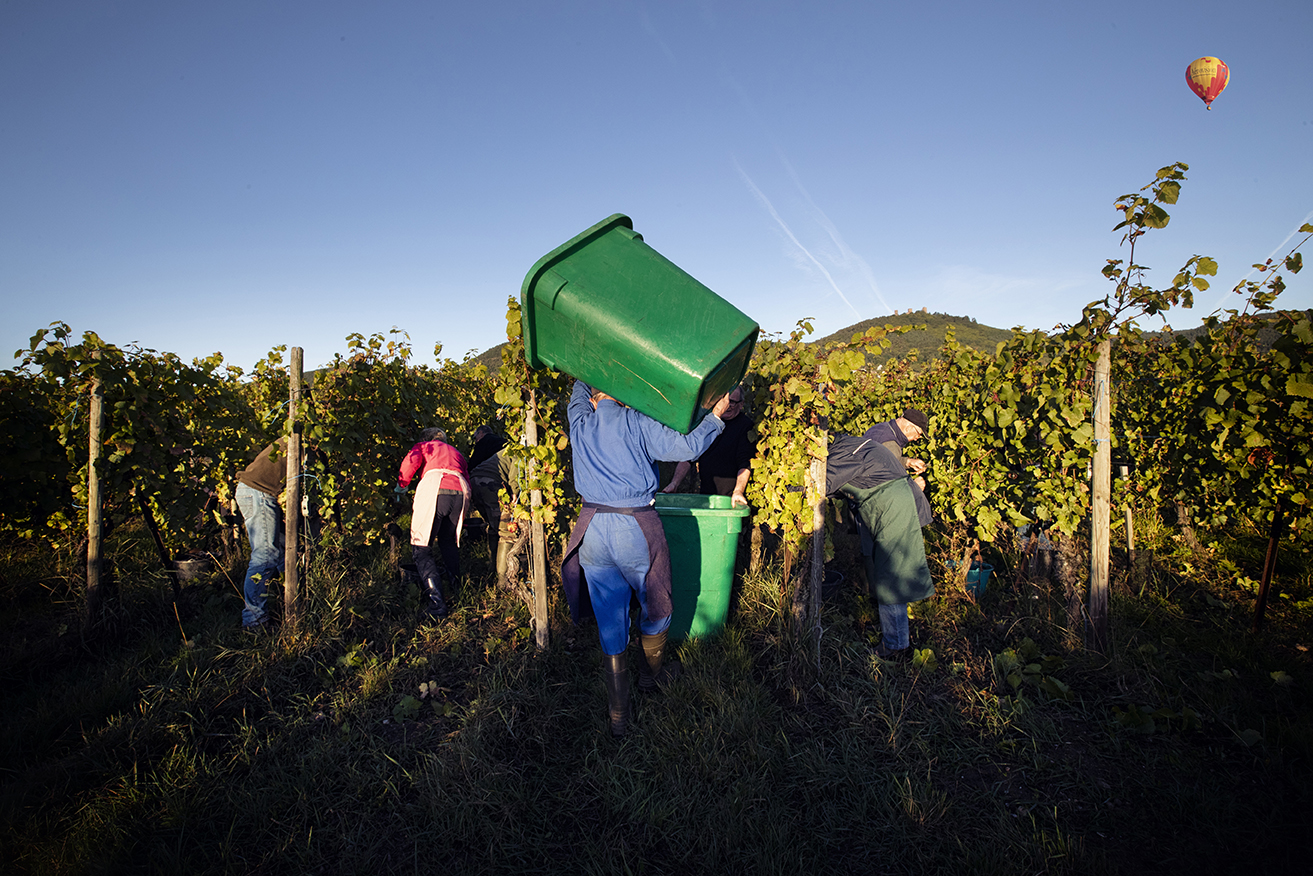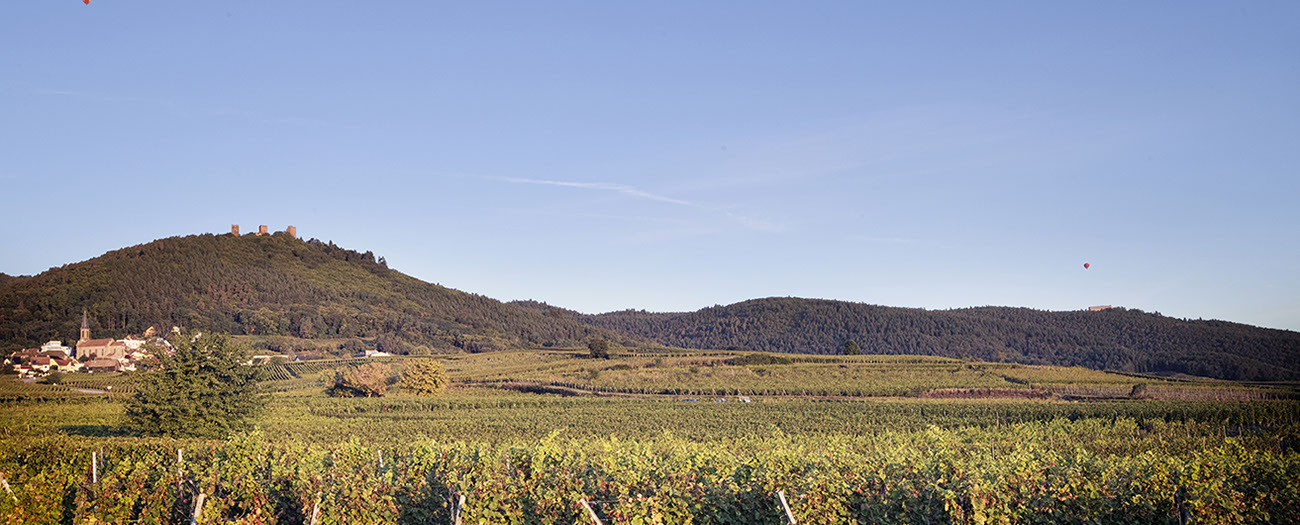
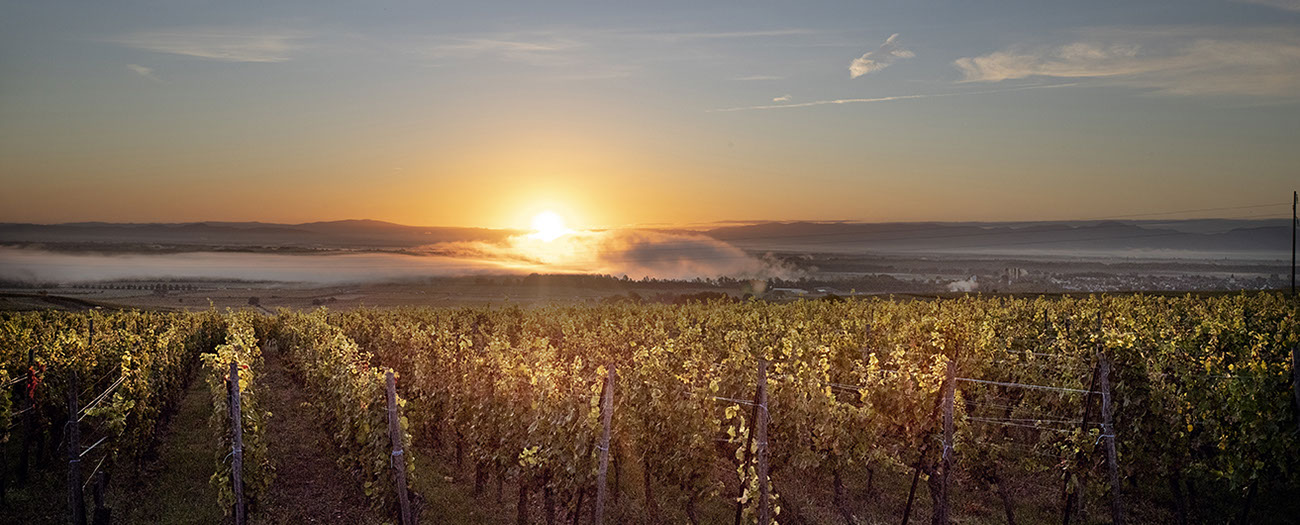
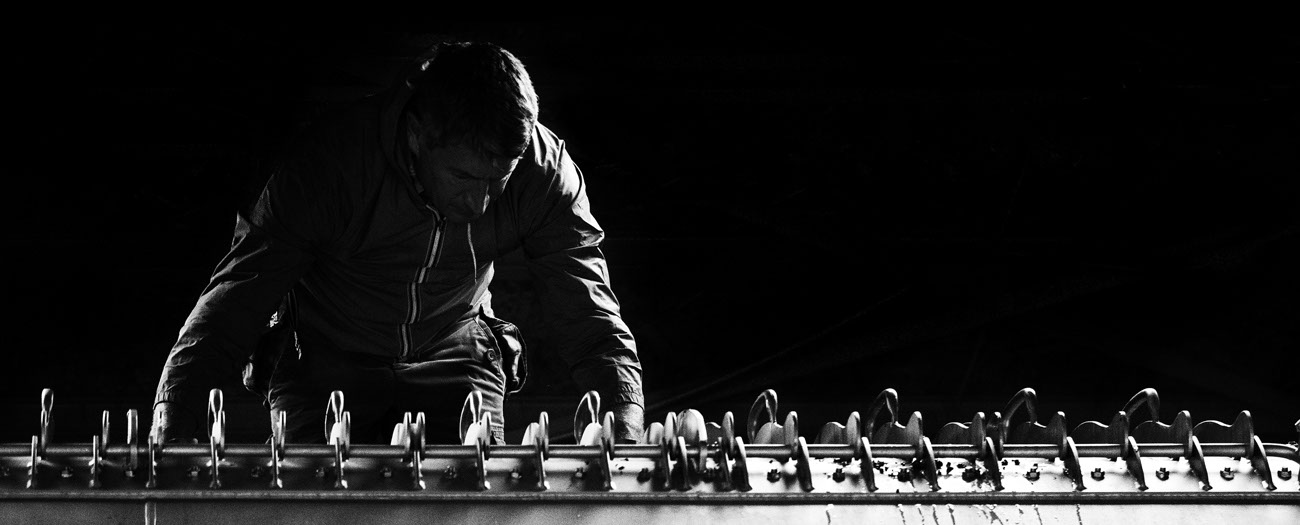
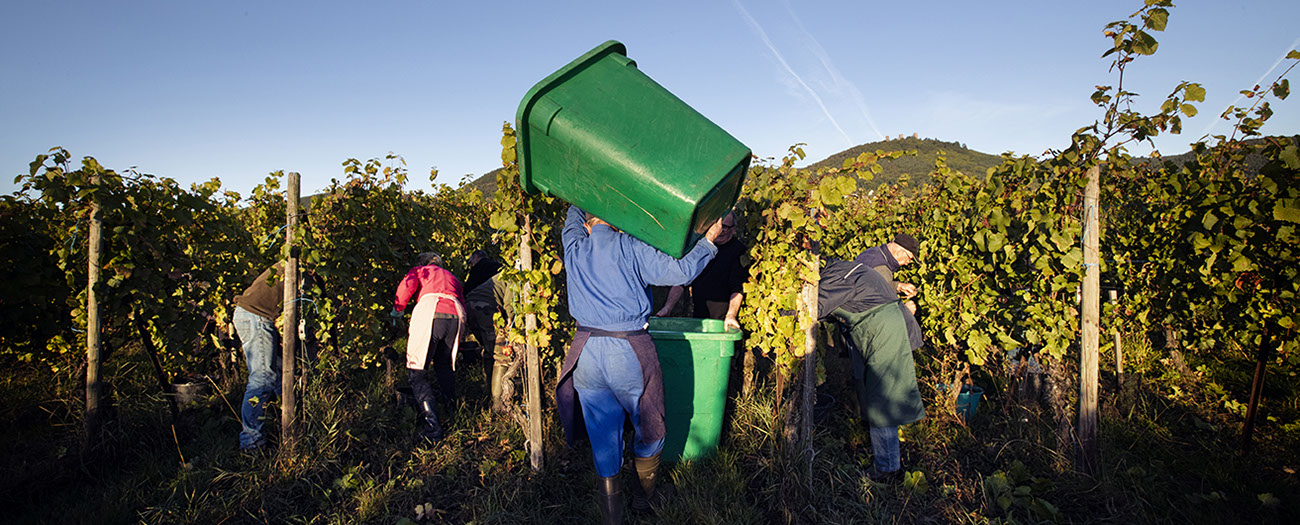

• i •
Family-owned
since 1909
For 4 generations,
we have been looking for quality
Adolphe Wehrlé, my great-grandfather, founded the estate in 1909, at a time when Alsace was still under German rule and there was no talk of the vineyard. He therefore started by buying a few plots of vines while continuing his work as a blacksmith. In 1918, Alsace became French again, and began to rethink the organization and production of its vineyard.
Xavier, my grandfather, was among the many supporters of quality. When succeeding his father, he really laid the foundations of the estate by creating a specific label and by doing the bottling himself. Above all, he remained true to the family spirit of buying good land.


Laurent Wehrlé and his father Maurice

In the early 1970s, Maurice, my father, took over. He decided to leave the center of the village in order to be able to develop the estate and also have a totally unobstructed view of the vineyard. I joined my father in 1997, after studying wine in Mâcon and then trade in Jouy-en-Josas. I also worked in Burgundy, Beaujolais, Germany and even South Africa becauseI was curious about the work of winemakers there. Since 2000, I have been driving the estate on his own.
• ii •
The highest village in the Alsace vineyard
The towers are also our roots


At the foot of the Stauffen mountains and the Three Castles of Eguisheim, the village of Husseren les Châteaux is the highest of the Alsatian vineyard, at an altitude of 390 meters. Next to the forest and above the vines, there is a view of the Rhine plain as far as to the Black Forest.
"Our family roots are in Husseren les Châteaux where the towers have watched over the village for centuries. We have therefore chosen them as the emblem on our labels. Drawn on the top of the W of our name, they mark our unwavering link to our territory.


• iii •
A mosaic vineyard of small plots
The diversity of the terroirs guarantees the character of our wines
"The vineyard was created almost exclusively by my grandfather. He did not choose an easy way with sixty different small plots. But what mattered to him was making wines with different characters. So he acquired them all according to the diversity of the terroirs but also their location and their exposure. With the exception of one single vineyard in the plain, all are located on slopes or mid-slopes. Today, the estate has ten hectares with varied soils of limestone, marl and clay. Four hectares are located on the slopes of the Eichberg and Pfersigberg grands crus."
• iv •
The 7 Alsatian grape varieties
We respect tradition with old vines and mass selection
True to tradition, all Alsace grape varieties are cultivated here. The white: Sylvaner, Pinot Blanc-Auxerrois, Riesling, Muscat, Pinot Gris, Gewurztraminer and the red: Pinot Noir. For our Crémants, we recently also planted Chardonnay. In our family, we have always taken great care of our vines because pulling them up is heartbreaking. We want more than anything to keep our old vines because they give really different wines. When we have no other choice, we replant as we always did, in close rows and mass selection. It’s much more work, but it is the price to pay for quality. This choice to work "the old fashioned way" is also a serious asset against climate change.


• v •
Our peasant common sense
We have always practiced respectful viticulture
Our approach is based on our peasant common sense: we work the vines well to produce good grapes which will give good wines. Since the creation of the estate, we have been practicing organic viticulture, but without naming it! Plowing has always existed, once with oxen or on horseback and today with a new system of plowing to replace the old ones. We have specific equipment with several chases and small tractors adapted to each wine-growing task. We have stayed true to our ideas by adapting them to our times. The organic certification that we have requested is a simple formality that highlights our know-how without changing it.

• vi •
Precision in the cellar
We make all our wines with the same attention
We have redesigned our range to offer even more distinct wines, from pleasure wine to plot and grand cru wines. We give all our cuvées the same precision as for our vines. Our terroirs being well identified today, we work in the cellar with separate vinifications or not, depending on the origin of the grapes. After having harvested them at good maturity but without excess, we carry out a measured extraction of the berries, then starting in fermentation exclusively with indigenous yeasts. For some of our vintages, we age several wines in barrels of Burgundy origin. The notions of grape balance and respect for the terroirs guide us in all our work in the cellar.



